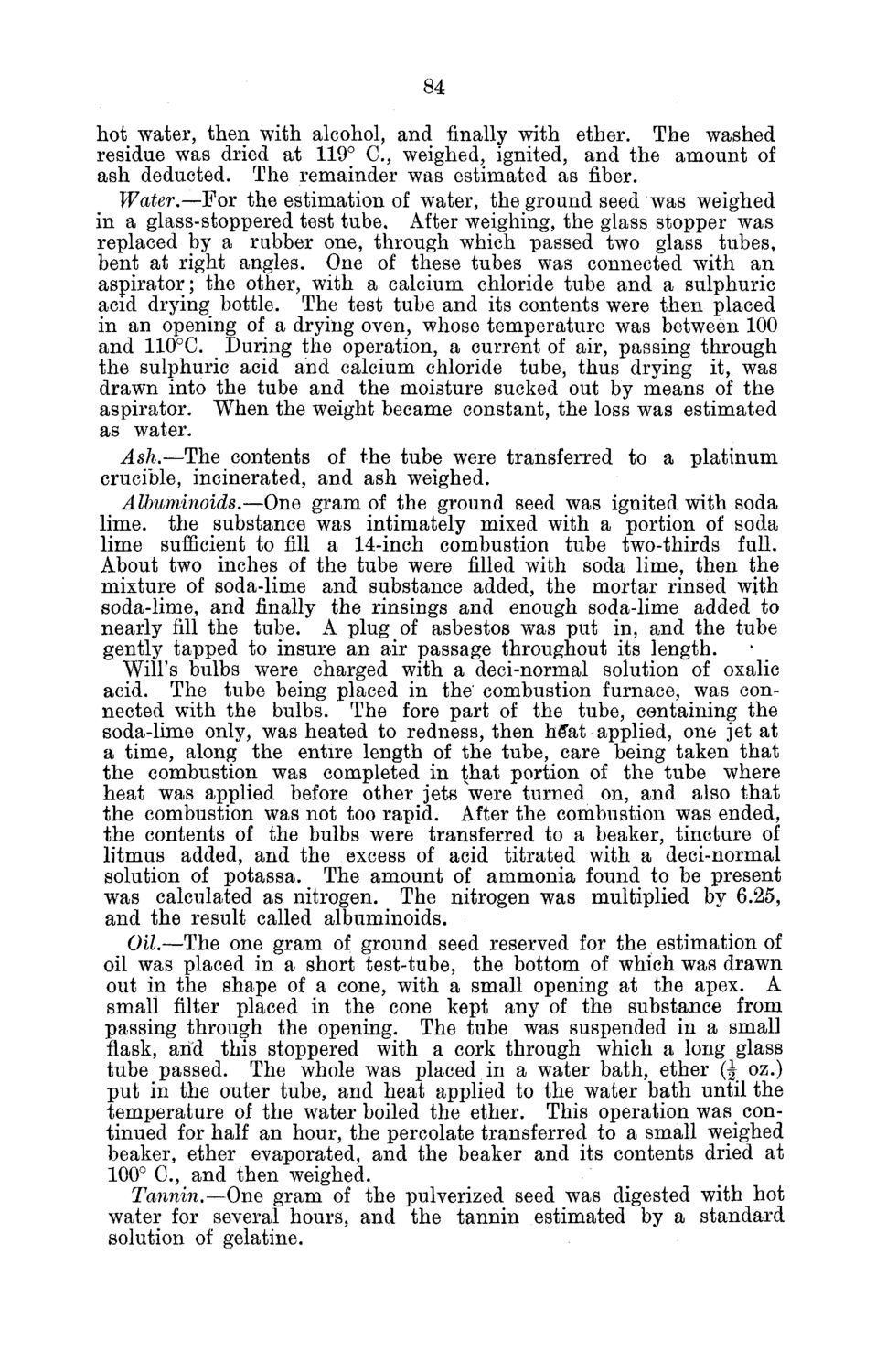| |
| |
Caption: Board of Trustees Minutes - 1882
This is a reduced-resolution page image for fast online browsing.

EXTRACTED TEXT FROM PAGE:
84 hot water, then with alcohol, and finally with ether. The washed residue was dried at 119° C , weighed, ignited, and the amount of ash deducted. The remainder was estimated as fiber. Water.—For the estimation of water, the ground seed was weighed in a glass-stoppered test tube. After weighing, the glass stopper was replaced by a rubber one, through which passed two glass tubes, bent at right angles. One of these tubes was connected with an aspirator; the other, with a calcium chloride tube and a sulphuric acid drying bottle. The test tube and its contents were then placed in an opening of a drying oven, whose temperature was between 100 and 110°C. During the operation, a current of air, passing through the sulphuric acid and calcium chloride tube, thus drying it, was drawn into the tube and the moisture sucked out by means of the aspirator. When the weight became constant, the loss was estimated as water. Ash.—The contents of the tube were transferred to a platinum crucible, incinerated, and ash weighed. Albuminoids.—One gram of the ground seed was ignited with soda lime, the substance was intimately mixed with a portion of soda lime sufficient to fill a 14-inch combustion tube two-thirds full. About two inches of the tube were filled with soda lime, then the mixture of soda-lime and substance added, the mortar rinsed with soda-lime, and finally the rinsings and enough soda-lime added to nearly fill the tube. A plug of asbestos was put in, and the tube gently tapped to insure an air passage throughout its length. Will's bulbs were charged with a deci-normal solution of oxalic acid. The tube being placed in the combustion furnace, was connected with the bulbs. The fore part of the tube, containing the soda-lime only, was heated to redness, then he^at applied, one jet at a time, along the entire length of the tube, care being taken that the combustion was completed in that portion of the tube where heat was applied before other jets were turned on, and also that the combustion was not too rapid. After the combustion was ended, the contents of the bulbs were transferred to a beaker, tincture of litmus added, and the excess of acid titrated with a deci-normal solution of potassa. The amount of ammonia found to be present was calculated as nitrogen. The nitrogen was multiplied by 6.25, and the result called albuminoids. Oil.—The one gram of ground seed reserved for the estimation of oil was placed in a short test-tube, the bottom of which was drawn out in the shape of a cone, with a small opening at the apex. A small filter placed in the cone kept any of the substance from passing through the opening. The tube was suspended in a small flask, and this stoppered with a cork through which a long glass tube passed. The whole was placed in a water bath, ether (J oz.) put in the outer tube, and heat applied to the water bath until the temperature of the water boiled the ether. This operation was continued for half an hour, the percolate transferred to a small weighed beaker, ether evaporated, and the beaker and its contents dried at 100° C , and then weighed. Tannin.—One gram of the pulverized seed was digested with hot water for several hours, and the tannin estimated by a standard solution of gelatine.
| |